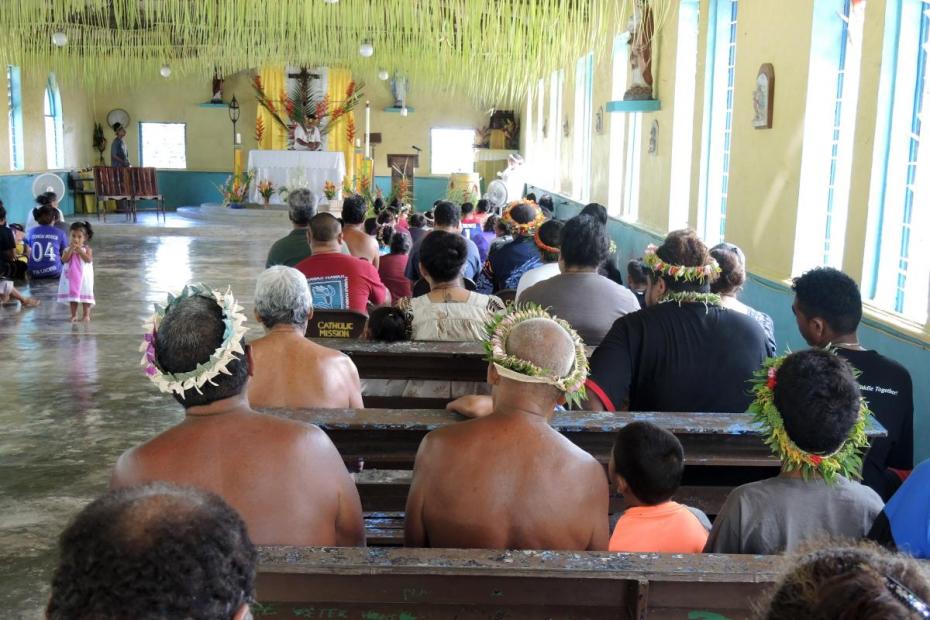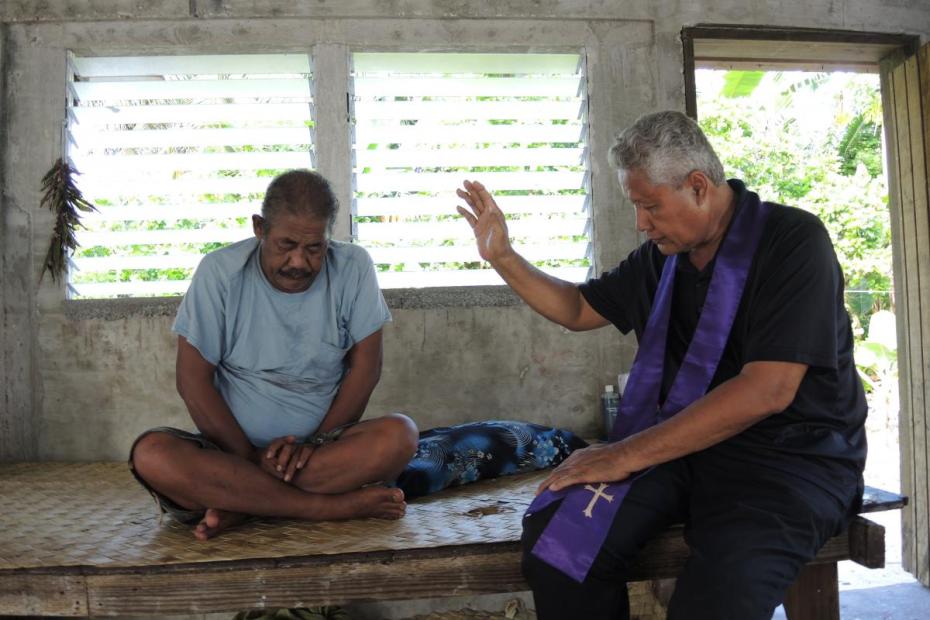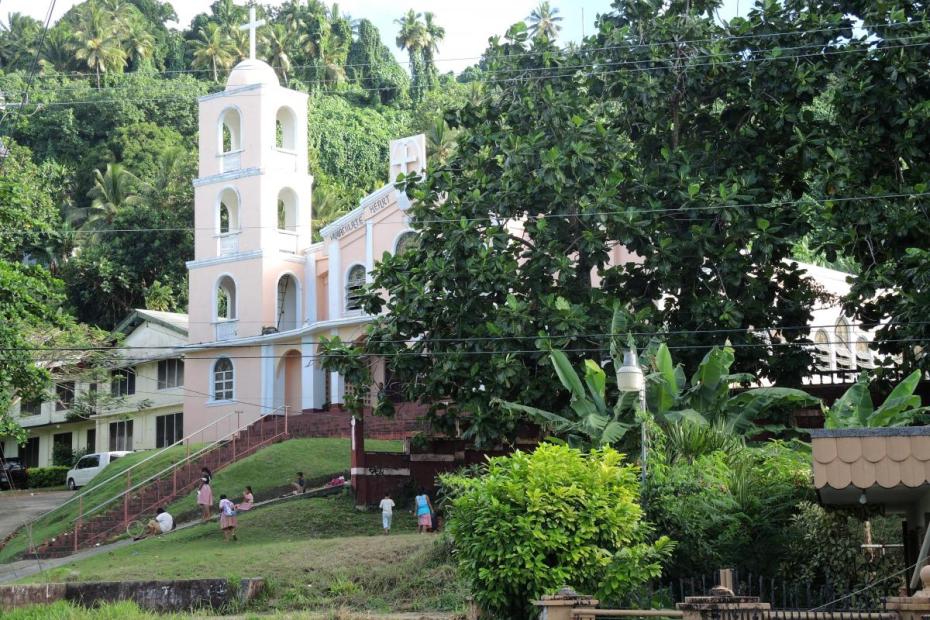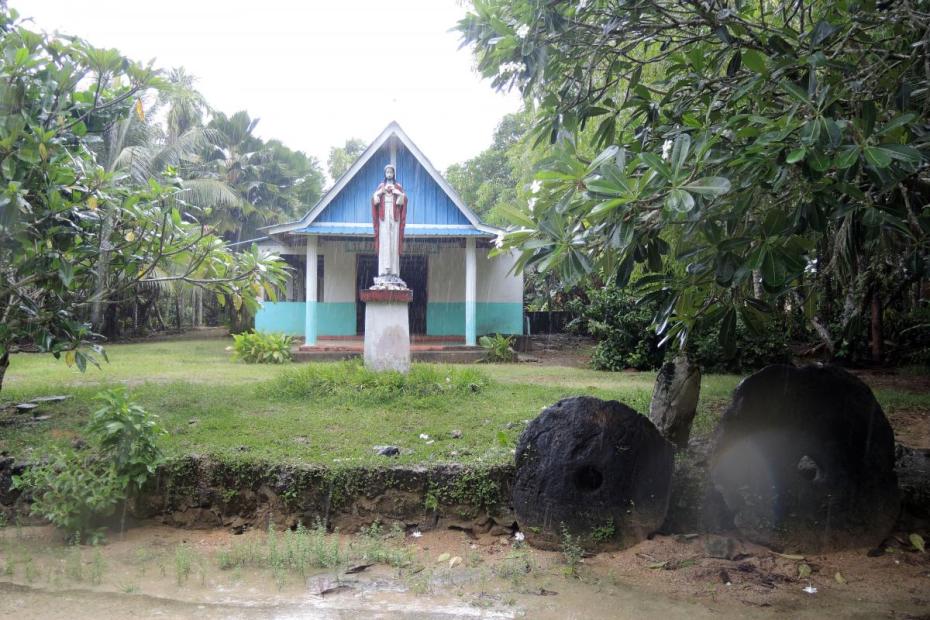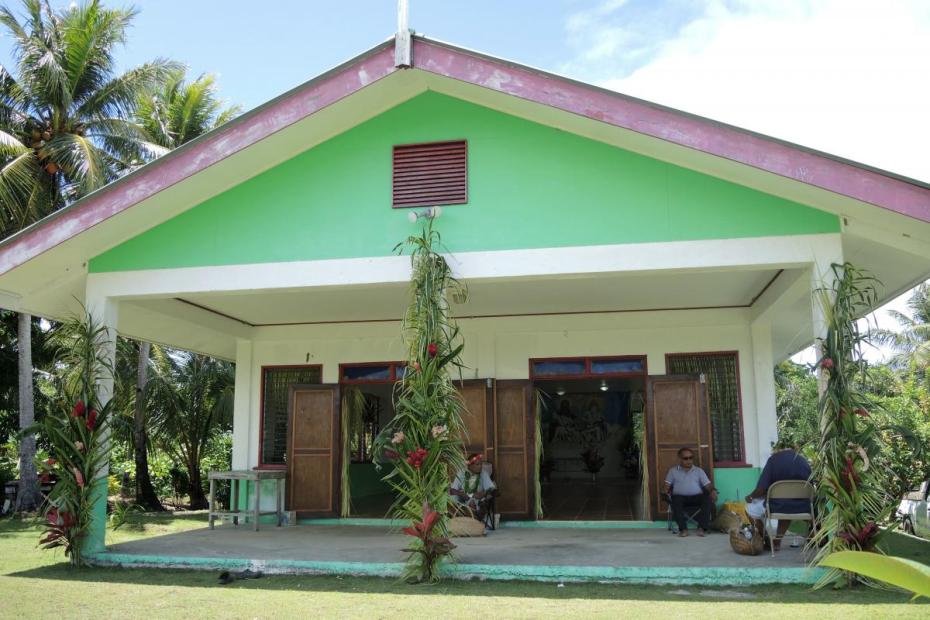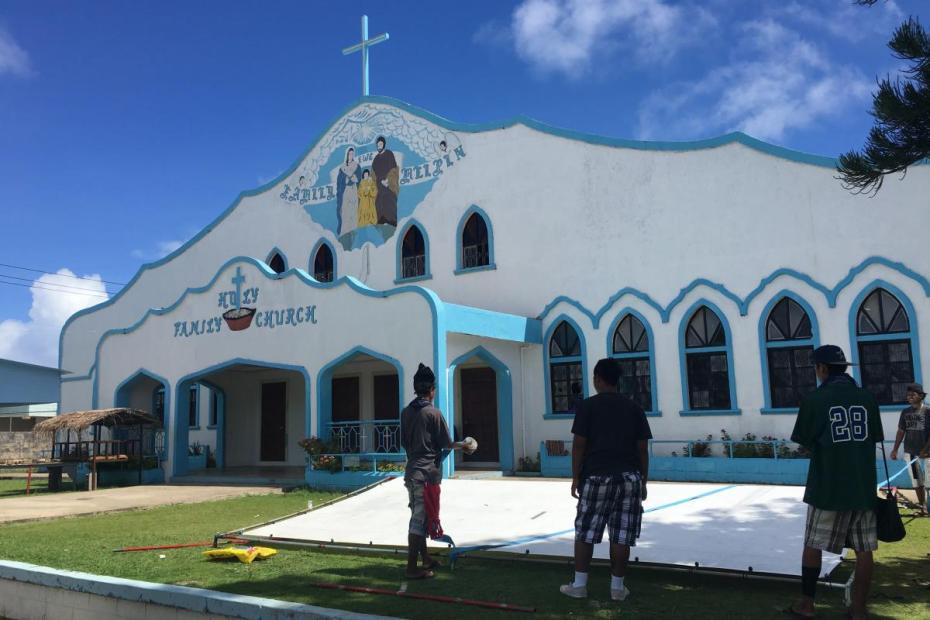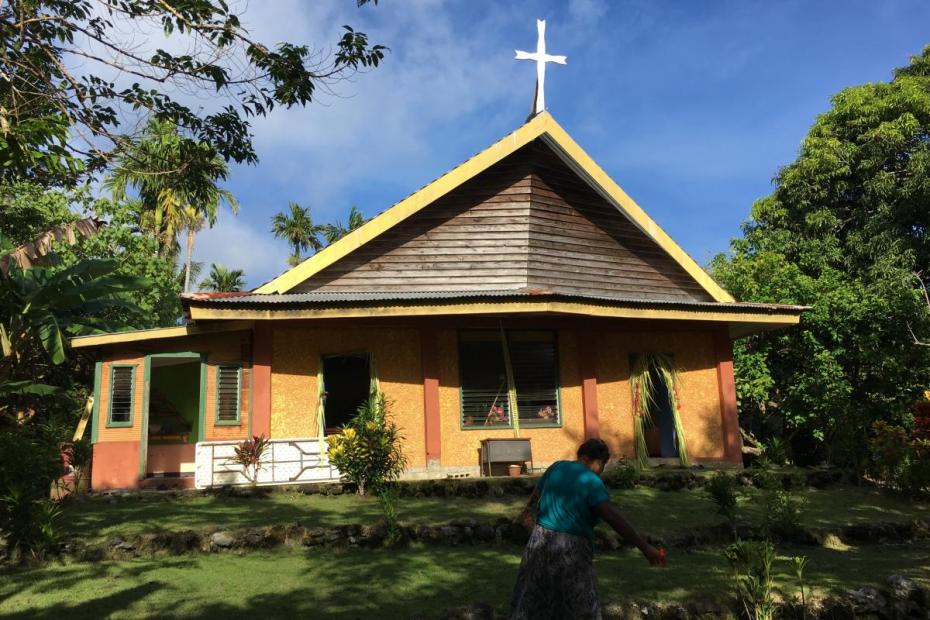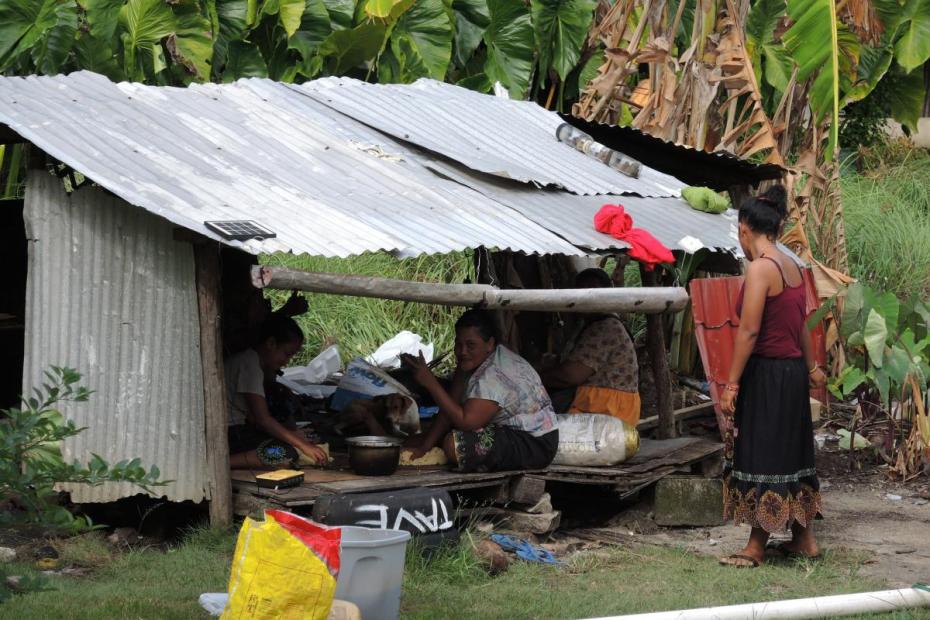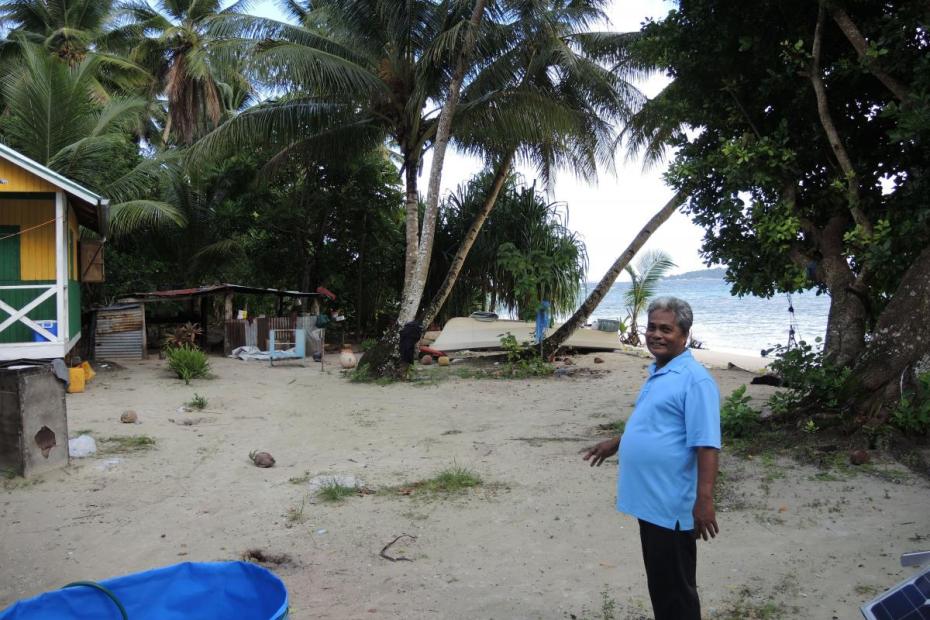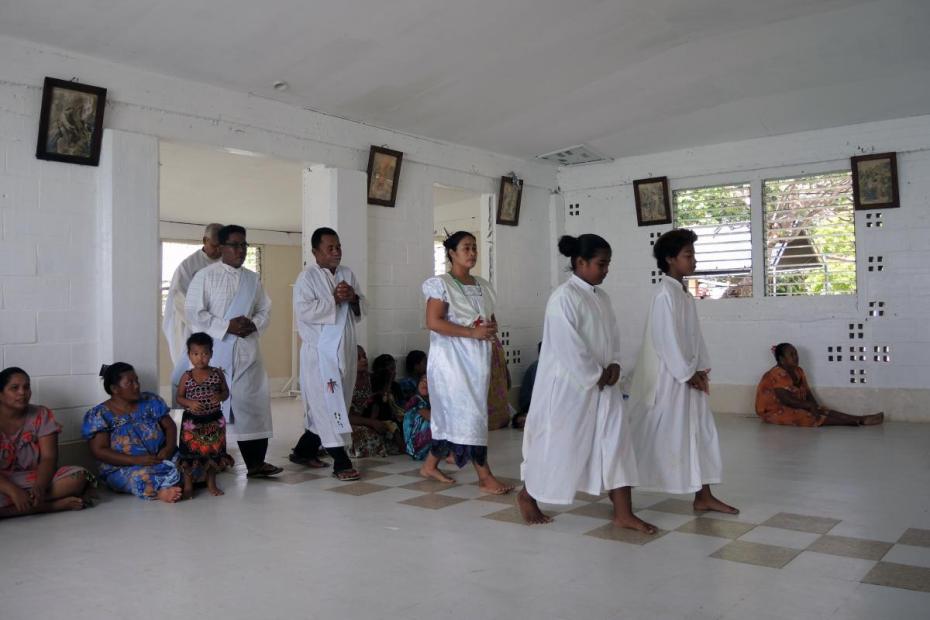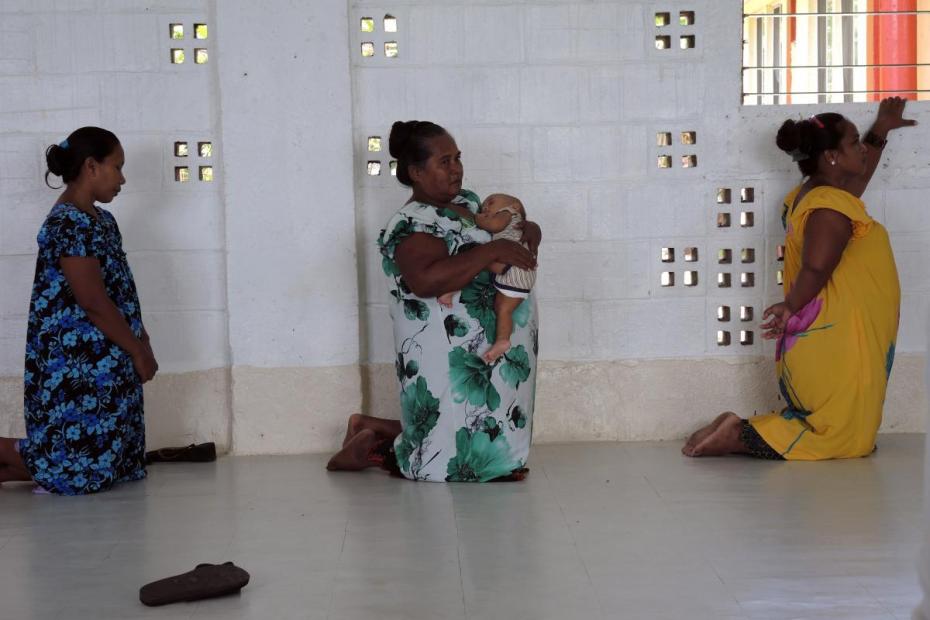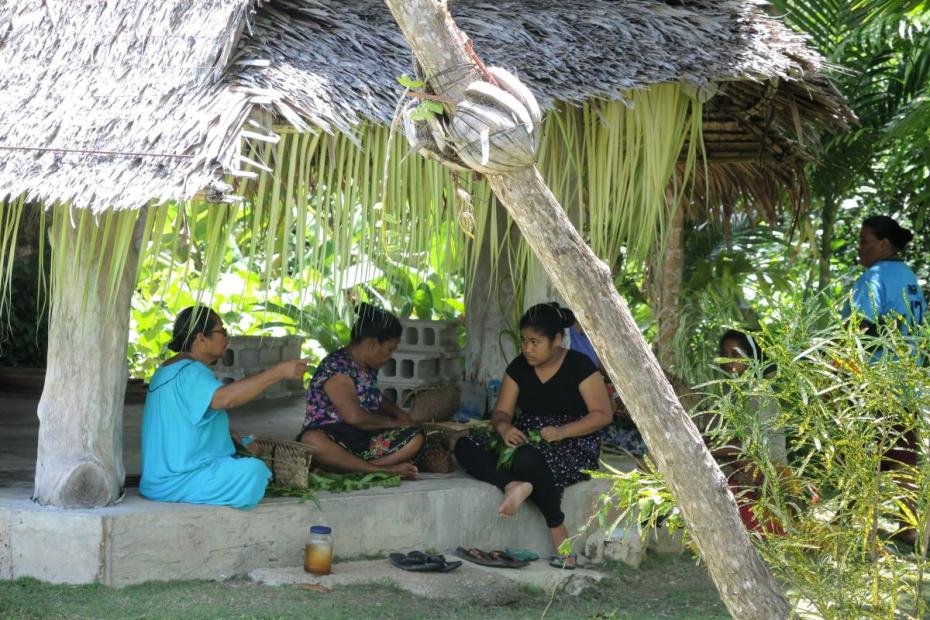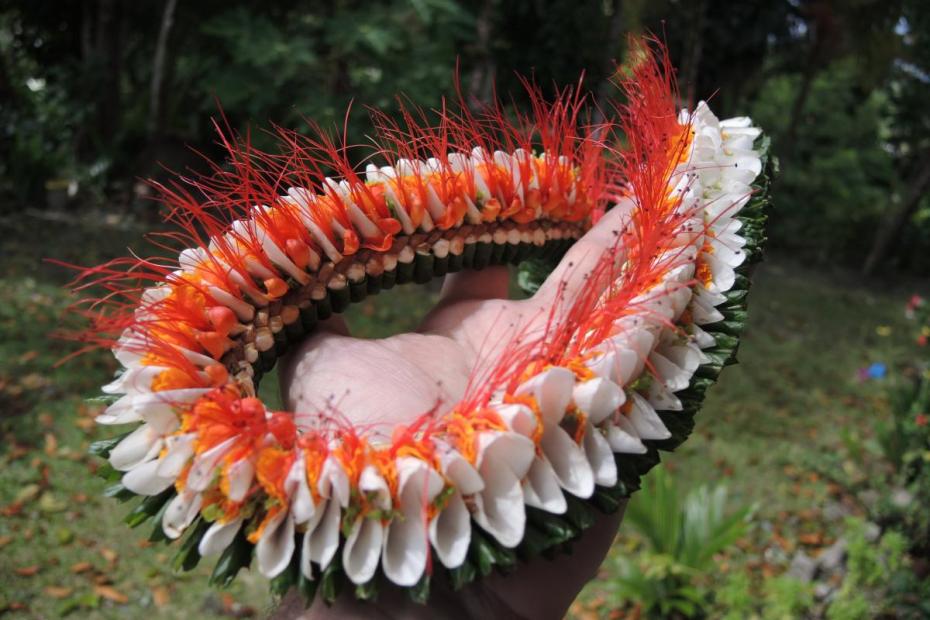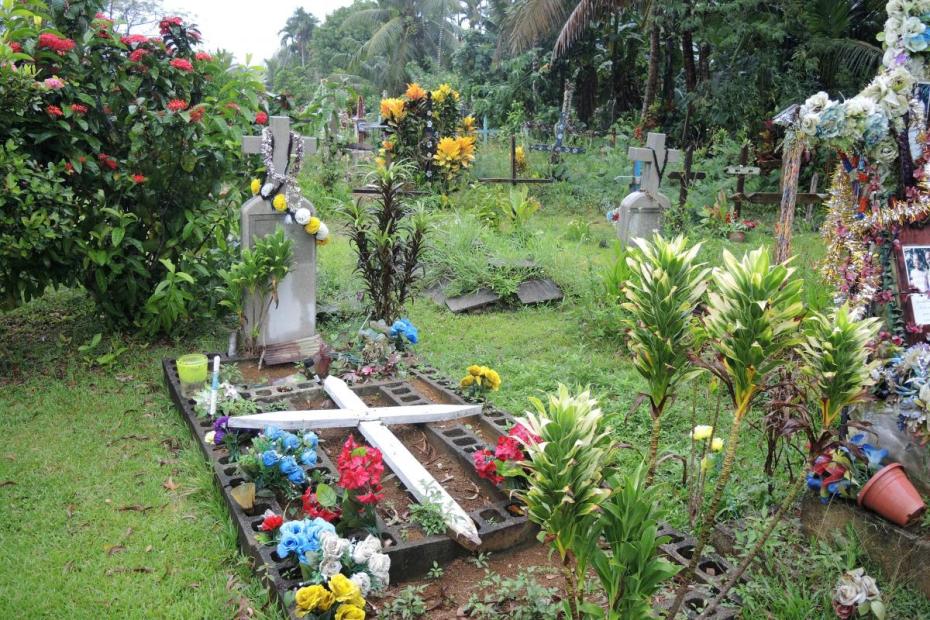The Federated States of Micronesia comprises more than 600 islands across a 2,700 km (1,700 mile) arc in the Western Pacific Ocean, organized in four states: Yap, Chuuk, Pohnpei and Kosrae.1
Though the vast majority of Micronesians identify as Christian (just over half the population identifies as Catholic), Christianity came late to these islands, beginning in the 1850s, nearly two centuries later than to Guam, which is not far to their north. About 80% of residents of Yap identify as Catholic, as do 55% of the residents of Chuuk and Pohnpei, but only 2% (153 Catholics with one chapel, a lay catechist, but no priest) of residents of Kosrae.2
Experts who write about Micronesia have debated the utility of treating the region as a cultural whole, or examining each island’s culture individually, as distinct cultures that simply happen to have been lumped together for colonial and political purposes.3 Still, Micronesian cultures are usually understood to differ from the Polynesian and Melanesian cultures that are spread across other regions of the Pacific.4
The islands of the FSM do share much in common. The island dwellers have long organized their lives around fishing and the cultivation of foods like taro and breadfruit. Their traditional built environment depended on the similar materials available to build with. They share a history of exceptional seafaring and celestial navigation skills, and have traded extensively with others for centuries. Their colonial history is also quite similar, and they are one polity today.
Traditional culture continues to impact, even often to define, daily life. Micronesian cultures operate according to powerful deference codes that establish hierarchies of relationship based on family lineage group, age, and chiefly status. Lineage groups, not the Western nuclear family, are the normative family structure.5 Francis X. Hezel, S.J., author of many books on Micronesia, remarks that Micronesian cultures emphasize belonging, not independence, and obligations rather than rights, and that indeed, most traditional island languages originally lacked any comparable word for “rights.”6
“If cultures were plotted on a scale from individualistic to group-minded, island societies would always run off the latter end of the scale.”7 Most Micronesians, Hezel says, would find American ways of independence impossible, problematic and disorienting. Generosity is a paramount traditional value in Micronesian cultures as well, he says, though some interviewed for this study feared it was giving way to individualism on Chuuk’s main island. As Hezel predicted, though, those interviewees saw this only as a bewildering and worrisome prospect.
For all that the islands share in common, in Micronesia it often seems to be the case that for some cultural rule that is absolute on one island, the situation is the opposite on another island. Almost all the islands have matrilineal lineage and property rules, but some, like Yap, have patrilineal rules, with mixed matrilineal elements. On most islands, men fish and women farm taro and breadfruit, but on some islands in Chuuk, the rules are fixed in opposite fashion.8 The primary traditional languages of the FSM—Yapese, Chuukese, Pohnpeian, Ulithian and Kosraean—are incomprensible to speakers of the other languages. Within many of these languages there are also multiple dialects. Because of this, English is used for inter-island business and politics. The islands also vary in their degree of modernization. Some islands, chief among them Pohnpei and Weno, the capital of Chuuk, are relatively well linked to global networks, with almost daily flights that connect them to the rest of the world via Guam. Most other islands are less accessible, usually only by boat, which could entail anything from a 20-minute ride to an overnight trip from one of the capital ports.
We are in no position to mediate that debate about particularity and commonality among Micronesian cultures, but given the degree to which many of the Catholic rituals and practices discussed here are particular to different islands, each of whose inhabitants claims to have a particular culture, it makes sense to organize the materials on the Catholics & Cultures site in a mostly localized fashion.
The small, scattered population of just over 50,000 Catholics and the remoteness of Micronesia might seem to make Micronesia a relatively minor story in regards to Catholicism and culture, but the accounts here from Chuuk and Yap offer unusual models, quite distinct from American, French, Spanish or any other European templates, of Catholic life and practice.
Hezel sums up some of the variety, and signals why it can be so intriguing when we think about religious expression: “Yapese express themselves through dance, Chuukese through song, and Pohnpeians through drama and reenactment.”9
Historical background
The FSM was formed in 1986 by the union of four island nations that were, since World War II, the United Nations Trust Territory: Yap, Chuuk, Pohnpei and Kosrae. 10 Those islands and island groups have been inhabited for at least 2,000 years by peoples who migrated great ocean distances in canoes using extraordinary navigational skill. They were inhabited by different waves of seafarers speaking different languages. Over time they were linked in networks of exchange and mutual dependence, but often, too, in conflict. According to the accounts and evidence available, “the social structure and the religions of the islands [were] fragmented and highly localized.”11
Westerners came to the islands sporadically, starting with Portuguese and Spanish expeditions in the 16th century. Spain claimed the lands as part of the Spanish East Indies, but Spaniards did not settle or trade there, sticking instead to better trade routes that ran just to the north. Eighteenth century Jesuit mission efforts on two of the Caroline Islands were repelled by the natives. Much more intensive encounters began in the mid-19th century. Whaling ships began to visit the Eastern islands of Pohnpei and Kosrae in the mid-19th century, and American Protestants began setting up missions there at that time. Spanish Capuchin missionaries followed into the region, established the first enduring Catholic mission in Yap in 1886, followed by others in Pohnpei and Palau.12 Catholic clergy did not arrive in Chuuk until 1912.
Over the course of 65 years, the islands were ruled by Spaniards, then Germans, then Japanese, before being taken by the Americans in World War II. Spanish Capuchins began the work, alongside lay Catholics from Guam. After Germany took political control, German Capuchins took their Spanish confreres’ place in 1904. When the Japanese took control, they insisted on a neutral party, so Rome sent Spanish Jesuits in 1921. During World War II, the islands were put on a wartime footing by the Japanese, and used as forward bases. The American effort to defeat the Japanese resulted in significant devastation.
After the war, under American trusteeship, the islands adopted democratic rule and slowly recovered economically. American Jesuit missionaries assumed clerical leadership, and as before, lay catechists played an important role in the daily life of communities, particularly on smaller islands. On larger islands, Catholic schools played a significant role in the spread of the Church and in the islands’ economic development.13
One of the more notable shifts occurred in the 1970s, when the first married Catholic deacons were ordained, and the 1970s and 1980s, when Chuukese and Yapese men were first ordained to the priesthood.
In 1978 Chuuk, Kosrae, Pohnpei, and Yap voted for self rule as the Federated States of Micronesia.14 The FSM, legally an independent country since 1986, is nonetheless linked to the United States of America through a “compact of free association.” It provides citizens of the FSM a variety of American military and economic benefits, including the ability to work and reside in the United States and Guam.
Traditional culture, religious culture
Today the Church relies on a large number of trained catechists and deacons. Many sub-parishes are visited by a priest only monthly or bimonthly. Traditional culture, though not static and unchanging, plays an important role in daily life. The realities of life on islands or in villages that have only a few hundred residents is that worship happens in communities where people know each other well. Mass or any other religious service is anything but an anonymous, private experience.
Culturally defined relationships and obligations towards elders, especially elders in one’s own lineage, profoundly affect daily life. The Church is granted significant leeway over its own sphere of competence, but the many ways where churchly and ordinary life overlap often require explicit negotiation of expectations. In startling ways, shifting from island to island, kinship relations and the requirements of respect to be accorded in light of them can complicate Catholic practice, as examples from Chuuk and Yap show.
- 1The name “Micronesia” is also commonly applied to designate an even broader geographic region, a swath of nearly 2,000 tiny, mostly uninhabited islands, including some that are not part of the Federated States of Micronesia (FSM). Guam, Palau, and the Marshall Islands are among those non-FSM “Micronesian” states. In the entries on this website for the FSM, “Micronesia” is used as a shorthand for the FSM as a country, not for the broader region, unless otherwise specified. Spanish cartographers designated an arc of of islands, including the island country of Palau and the islands that are united today as the FSM, as the Caroline Islands, a name that is still used on maps today.
- 2Data for Yap are calculated from Table 15.5, “Religious Membership by Region and Sex: 1994, 2000 and 2010” Yap State Statistical Yearbook, Yap Branch Statistical Office, Colonia, Yap, FSM, 2011, p. 194. Almost every interviewee, including the people at the statistical office, predicted that the 2020 census would show some decline in Catholic membership, both on Yap and in its Outer Islands. Data for Chuuk and Pohnpei are from the 2010 census, as summarized on charts at http://pacificweb.org/fsm-chuuk/ and http://pacificweb.org/pohnpei/. Data for Kosrae are from the 2000 census, accessible at http://www.pacificweb.org/DOCS/fsm/2000KosraeCenus/2000%20Kosrae%20Census%20Report_Final.pdf. Kosrae is primarily Protestant. Data for Kosrae are from the 2010 census, as summarized on charts at http://pacificweb.org/kosrae-2010/. Thanks to Michael J. Levin for making that information accessible.
- 3For an excellent summary of that debate, see Glenn Petersen, Traditional Micronesian Societies: Adaptation, Integration, and Political Organization in the Central Pacific (Honolulu: University of Hawai’i, 2009), 12-36.
- 4Petersen, Traditional Micronesian Societies, 18-24.
- 5For a broad overview of the implications, see Francis X. Hezel, S.J., Making Sense of Micronesia: the Logic of Pacific Island Culture (Honolulu: University of Hawai’i, 2013), 11-36.
- 6Hezel, Making Sense, 47.
- 7Hezel, Making Sense, 25.
- 8Hezel, Making Sense, 8.
- 9Francis X. Hezel, S.J., personal correspondence. Special thanks are due to Fr. Hezel for his help at every step of this research.
- 10Spanish cartographers designated that arc of of islands, which also includes Palau, as the Caroline Islands. The name “Micronesia” is also sometimes used to describe the broader geographic region, a swath of nearly 2,000 islands, including Kiribati, the Marianas, the Marshalls, Nauru and Palau. These are often categorized as “Micronesian” in a broader geographic and cultural sense. Given their independent political status from the FSM and each other, in the organizational framework of the Catholics & Cultures website, they are treated independently. Palau, the Marshalls and the Northern Marianas were once part of the trust territories, but did not join with the FSM at its founding.
- 11Jay D. Dobbin, Summoning the Powers Beyond: Traditional Religions in Micronesia. (Honolulu: University of Hawaiʻi Press, 2011), 22, 208. On the region’s pre-colonial history, see Francis X. Hezel, S.J., The First Taint of Civilization: A History of the Caroline and Marshall Islands in Pre-Colonial Days, 1521– 1885, Honolulu: University of Hawai’i Press, 1983. For a brief history of the pre-colonial history of the Micronesian peoples, see Petersen, Traditional Micronesian Societies, 37-65.
- 12Palau, part of the geographical area known as Micronesia, was linked to the missions that brought Christianity to the region, but in 1978 chose to become an independent republic rather than incorporate with the four trust territories that became the FSM.
- 13For an overview of Protestant and Catholic church growth in the Micronesia region, including Guam, see Francis X. Hezel, “Christianity in Micronesia: The Interplay between Church and Culture” in Introducing World Christianity, ed. Charles E. Farhadian, Blackwell, 2012, 230-243.
- 14Micronesia’s colonial history is recounted by Francis X. Hezel, SJ, in Strangers in their Own Land: A Century of Colonial Rule in the Caroline and Marshall Islands (Honolulu, University of Hawai’i Press, 1995).
